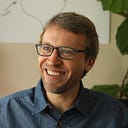Publication of “Spacetime Paths as a Whole”
The aim of The Synchronicity Institute is to establish the phenomenon of synchronicity — or meaningful coincidence — as a scientific phenomenon. The path to doing this is a bit circuitous and strategic, and the publication of “Spacetime Paths as a Whole” in Quantum Reports on December 31, 2020, is a milestone on this path.
“Spacetime Paths as a Whole” deals with our understanding of time. There is a long history of confusion in science around the mathematics of time, because as human beings we are very familiar and intimate with time. We are immersed in it, we are constrained by it, we can’t go backward, only forward at the pace of the clock. This limitation shows up as inconsistencies in many areas of science. The famous Schrodinger equation in quantum mechanics is known to be a compromise which doesn’t treat time properly, yet it is extremely successful from an engineering and technical perspective.
Time as a filmstrip
What does the new paper say about time? It’s the difference between a clock and a filmstrip. A clock is a way of tracking seconds, dividing the day into pieces, reducing the whole to its parts. A filmstrip is a means of telling a story, it is connected from beginning to end, it sees the whole from the parts.
When light leaves the Sun, it starts an eight minute journey to Earth. When you see the Sun, you are seeing light that is eight minutes old. But Gilbert Lewis pointed out in 1926 that the mathematics of light propagation indicates that light actually does not register any distinction between the Sun and Earth. It doesn’t travel. The beginning and ending are a single event. It appears to us that light travels 92 million miles over eight minutes, but to light this is a single, timeless, spaceless event. It is a whole story, a whole journey rather than a series of individual steps.
The aim with “Spacetime Paths as a Whole” is to use well-established theories such as the Feynman path integral to show that space and time are holistic, they cannot be broken into pieces, and that there is a description of the world which is non-reductionist. The mathematics of “frequency space” and the Fourier transform are central to this view. One can learn about the holistic nature of the Fourier transform through simple everyday examples, such as your music mp3 files or streaming videos and photographs. These technologies use the same techniques for data compression, and you can see the results sometimes when the quality of the media isn’t quite good enough.
This approach doubles down on the notion of the world as information, or even as a “simulation.” It also may resolve some of the technical problems we have with the mathematics of time.
A Vast, Intimate Cosmos
On another hand, it points to a cosmos which, though vast, is intimate. From this starting point, rooted in non-controversial mainstream science, my book “Leap to Wholeness: How the World is Programmed to Help Us Grow, Heal and Adapt,” makes a case for a more profound possibility. You are not isolated in the present moment, separated from the history of the cosmos to drown in obscurity. Rather, you are part of a filmstrip, a story which has an arc from the past to the future. The choices you make matter towards the unfolding of this journey, and we are all part of something really big.
With this vast, yet intimate picture of history, let’s raise our vision beyond the immediate horizon and decide where we want the story to lead.
